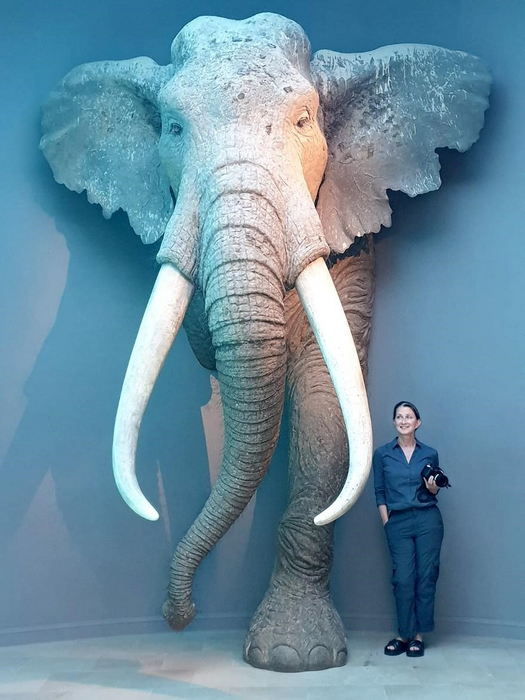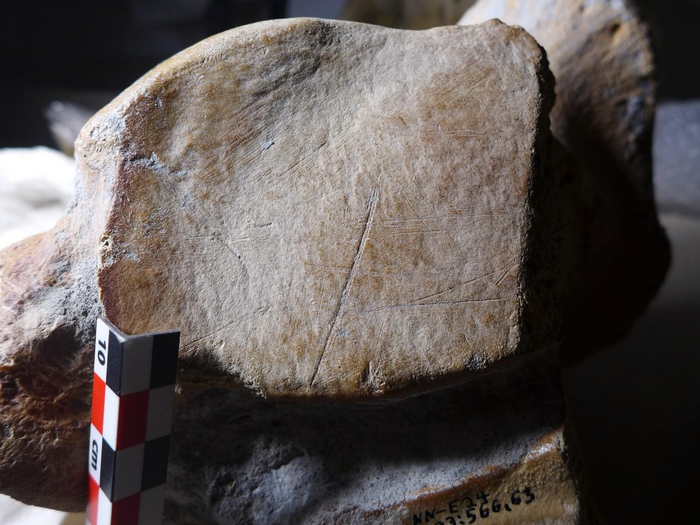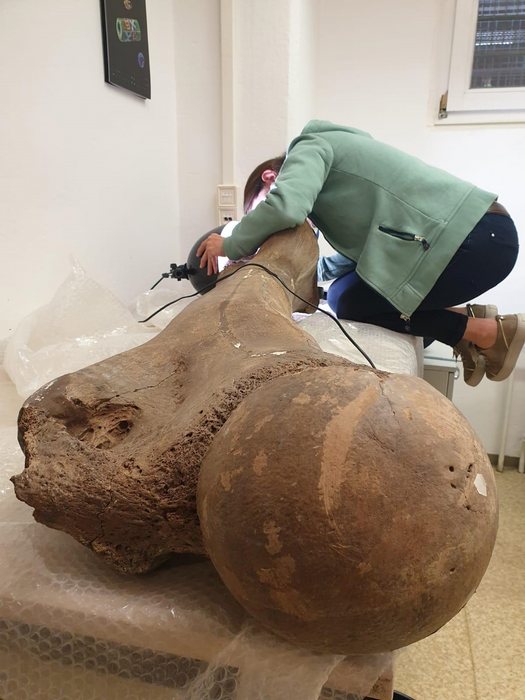Despite its name, the mammoth was not the largest Pleistocene land animal. That status goes to its relative, the straight-tusked elephant (Palaeoloxodon antiquus), which, due to weighing up to 13 tonnes, was twice the size of a modern African elephant and lived across Asia and Europe until around 100,000 years ago. Anthropologists have sought evidence that Neanderthals hunted Palaeoloxodon, maybe even to extinction, but evidence has been ambiguous until a recent discovery that could change the way we envisage our nearest extinct relatives’ social structures.
For around 700,000 years, Palaeoloxodon is thought to have survived ice ages in southern Europe and the Middle East, expanding its range into central Europe during interglacials. Their enormous size means the adults at least were probably more threatened by lack of food than by predators, until they ran into one that could wield weapons and work in teams.
Although Neanderthals’ toolmaking skills gave them the capacity to take on Palaeoloxodon, that alone doesn’t prove they did. Fighting a rampaging beast that size would have been a terrifying experience, even with spears, and might not have been worth it if most of the meat would need to be left behind. However, in a recent study, a team led by Professor Sabine Gaudzinski-Windheuser of the MONREPOS Archaeological Research Center have pointed to abundant cutmarks on bones as proof elephant was part of the Neanderthal diet.

Dr Sabine Gaudzinski-Windheuser with a life-sized reconstruction of an adult male straight-tusked elephant (P. antiquus), in the Landesmuseum für Vorgeschichte, Halle. It takes quite a tribe to eat something like this.
Image credit: Lutz Kindler, MONREPOS
The evidence comes from the Neumark-Nord 1 site near Halle, Germany, where 3,122 bones, tusks, and teeth – thought to come from more than 70 straight-tusked elephants – have been found, dating to around 125,000 years ago. Gaudzinski-Windheuser and co-authors found signs of cutmarks on many of these bones that could only come from stone tools being used to slice off meat.
Although scavenging on elephants that died in other ways might leave the same marks as butchering those that had been hunted, the concentration of so many bones in one place makes that unlikely. Moreover, the bones overwhelmingly came from fully grown individuals – unlikely targets for even the most daring saber-toothed felines of the day, and something that couldn’t have arisen randomly. It seems these Neanderthals preferred to tackle bulls that weighed twice as much as the largest African elephants, but were probably solitary, than tackle herds of females and babies.

Cut mark on a roughly 50-year-old straight-tusked elephant’s bone from a Neanderthal’s tools.
Image credit: Wil Roebroeks, Leiden
The authors calculate it would have taken several days for a team of Neanderthals working together to cut up such a beast, let alone to process it all. Since neither humans, nor our mushroom-loving relatives, can survive on meat alone (whatever Jordan Peterson tells you), it would have taken an extended family of 25 three months to eat it all.
Unless the hunters went to all that trouble only to waste most of the meal, the authors believe this indicates at least some Neanderthals lived in larger groups than previously imagined. The paper proposes they were either stationary for substantial periods, with the skills to dry or freeze the meat, or multiple tribes came together for a period to dig traps and feast for weeks on the reward. Such events would have greatly facilitated cultural exchange.
A population staying in one place and gathering vegetables to accompany their roast elephant could have changed the local environment more than has been thought.

Dr Sabine Gaudzinski-Windheuser examining the femur of a large adult male elephant for the presence of cut marks prior to a microscopic examination.
Image credit: Lutz Kindler, MONREPOS
This doesn’t mean elephant hunting was universal among Neanderthals. “It is increasingly clear that Neanderthals were not a monolith and, unsurprisingly, had a full arsenal of adaptive behaviors that allowed them to succeed in the diverse ecosystems of Eurasia for over 200,000 years,” the University of Tübingen’s Dr Britt Starkovich, who was not involved in the research, said in an accompanying perspective.
The find also shifts perspectives on numerous other sites where bones of mammoths (half the size of Palaeoloxodon) and even smaller rhinoceroses, were found intermingled with Neanderthal tools. Speculation that Neanderthals just scavenged these large animals seems less likely in light of this discovery.
The paper is published in Science Advances.
An earlier version of this article was published in February 2023.
Source Link: How Neanderthals Managed To Take Down Giant Elephants 125,000 Years Ago